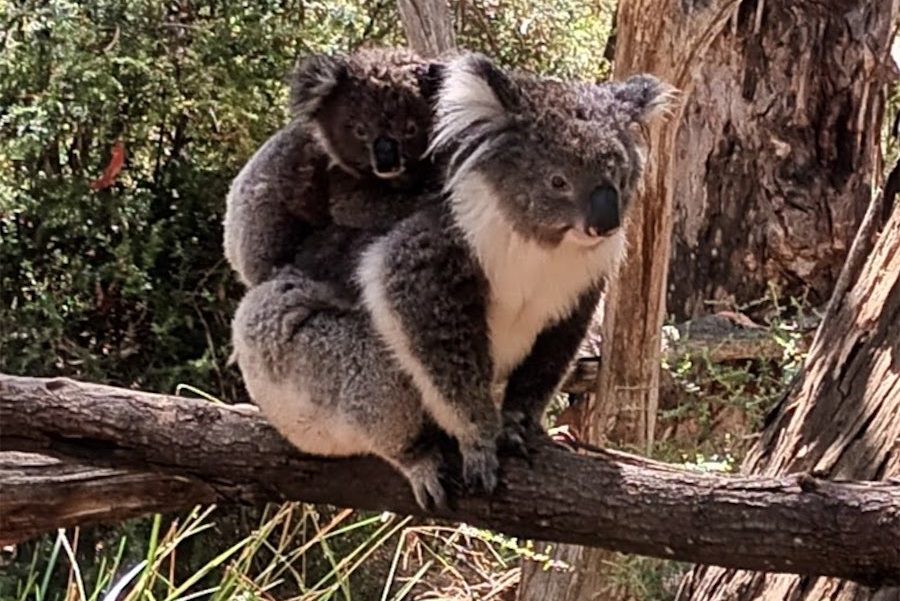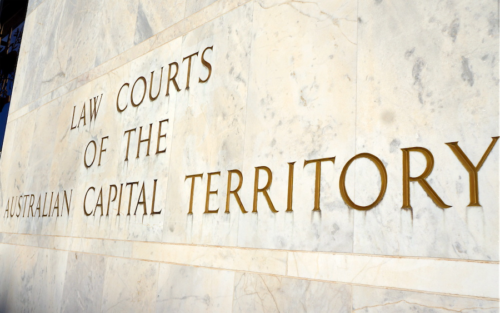
NOEL BEDDOE continues his occasional series reminding us why Canberra is the most beautiful place to live… this time he visits Tidbinbilla Nature Reserve.
“One of our great threats is bushfire. The last bad ones destroyed vegetation across about 20 per cent of the reserve on our south east slopes.

“With ground cover removed, flooding rains carried sediment and debris down the mountain with them. It damaged roads and took out great sections of fencing. You can imagine the crisis.
“Getting the fences repaired was a job for all hands on deck, it didn’t matter what your designated job was.”
The speaker: Alison Mungoven, senior ranger for the Tidbinbilla Nature Reserve.
The fences are tall, heavy wire erected over some kilometres of three sanctuaries to protect the threatened species that live within.
“While the fences were broken our endangered species had no protection from feral predators; it was an urgent matter,” she said.
The permanent staff at Tidbinbilla numbers 14 across three divisions. Nearly all are university graduates in the field of environmental studies and they come to work at the southern reserve from as far away as Ainslie and Belconnen, a round trip of more than an hour and a half a day.
I imagined them struggling in cold rain, wind, mud doing heavy, dangerous work. Why do they do it?
I was talking with Alison seated at a picnic table in one of Tiidbinbilla’s meadows; there’d been rain and wind was blowing masses of cloud down from mountains to the west. Meadow grasses and gum tree leaves sparkled with water. A juvenile grey kangaroo hopped up close to take a look at what we were doing.
Alison nodded at the vista around us.
“This,” she said, “is not a bad office to work in.
“I love watching how the seasons change the country. The seasons dictate the nature of the work – spring is weed work, summer bushfire duty. In winter inevitably we get a few search and rescues.
“I love how varied the work is.”
Tidbinbilla has two tasks – to hold a perfect forever the trees, bushes, foliage, wildlife, grasses exactly as they were for thousands of years before European settlement, and to protect and develop several endangered species that live within its boundaries.
The need for a reserve first was suggested probably in 1910. Land purchase began in the 1930s.The reserve was proclaimed by government gazette in its current form in 1971; it now covers an area of more than 54 square kilometres and is home to at least eight species of native animals, including the endangered brush-tailed rock wallaby, platypus, koalas and corroboree frog.
Not all of the work is dramatic or exciting.
“Sometimes someone has to go to the post office to collect the live crickets,” Alison said.
It took me a while to process that information.
“The corroboree frogs eat live crickets. We can’t harvest them here. We have to buy them, and they are sent to the post office for collection,” she said.
The area is one of significance to the Territory’s indigenous population. In her seminal work The Moth Hunters, author Josephine Flood speculated that the name “Tidbinbilla” derived from a Ngunnawal expression “jedbinbilla”; translating is a chancy business because of the cultural significance that gets left behind, but a fair attempt is generally held to be “the place where boys become men”.
The area, it appears, was a place of male initiation to the Ngunnawal; probably a site for the ceremonies was the Bririgai rock shelter, an impressive formation that can be viewed after a walk of about three kilometres from the reserve’s main parking area.
How can visitors help Tidbinbilla?
Alison: “One of the most difficult tasks relates to invasive species. We spend about $200,000 a year on weed eradication. Beyond question some foreign seeds get carried in on vehicles and on the shoes of visitors.
“If you’re coming, it would be a great help to us if you could hose down your vehicles of any mud that might carry seeds and check shoes and other equipment.”
Other tips if visiting: there are no local sources of petrol so be sure that you have a full tank before setting out; currently there is no reception area or shop, so everything you want to consume, including water, will have to be brought with you; Tidbinbilla has no rubbish bins – whatever you bring in must be carried out; it might be a good idea to include a garbage bag if you intend to have a barbeque of picnic.
It’s ours. Enjoy.
Canberra author Noel Beddoe’s has been published in “The Australian” and “The Sydney Morning Herald”. Three of his novels have been nominated for the Miles Franklin Literary Award. He is grateful for the assistance of the Environment, Planning and Sustainable Development Directorate media unit in facilitating this report.
Who can be trusted?
In a world of spin and confusion, there’s never been a more important time to support independent journalism in Canberra.
If you trust our work online and want to enforce the power of independent voices, I invite you to make a small contribution.
Every dollar of support is invested back into our journalism to help keep citynews.com.au strong and free.
Thank you,
Ian Meikle, editor





Leave a Reply